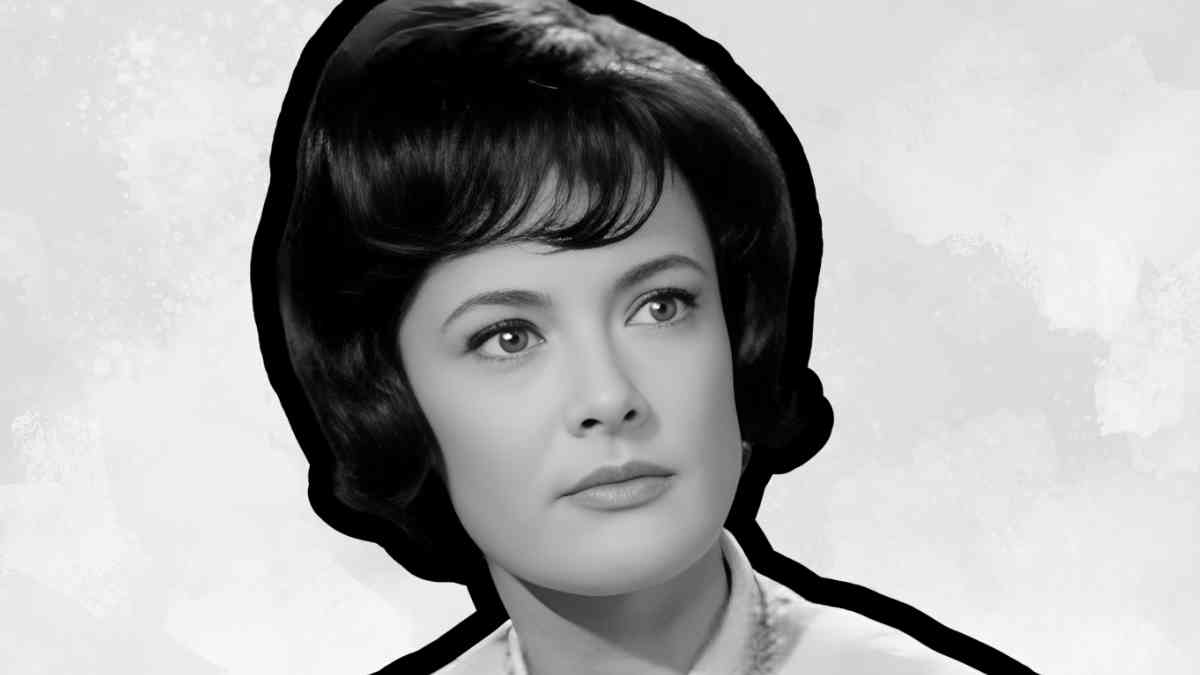Mercy Haystead: The Captivating Starlet of British Cinema’s Golden Era

The British film and theatre industry has birthed countless talents whose influence still lingers long after their final curtain call. Among them, Mercy Haystead stands out as a beacon of charm, grace, and raw talent. A celebrated actress of the 1950s and early 1960s, Haystead’s career—though relatively short—left an indelible mark on British cinema. This article delves deep into her life, work, and legacy, offering a comprehensive look at the actress behind the screen.
Early Life and Background
Mercy Jean Haystead was born on 2 February 1930 in London, England, during a period when Britain was undergoing social and cultural transformation. From an early age, it was apparent that Mercy had an innate flair for performance. Her poise, elocution, and expressive nature made her a natural candidate for the performing arts.
Blessed with intellectual curiosity and artistic ambition, Mercy earned a scholarship to the prestigious Royal Academy of Dramatic Art (RADA). Gaining entry into RADA was no small feat, especially during a time when competition was fierce and women in the arts faced considerable societal pressures. Her achievement is a testament to her raw talent and determination.
Launch into Acting
Mercy Haystead began her professional acting journey in the late 1940s. Her first significant appearance came in the film What the Butler Saw (1950), where she showcased her effortless screen presence and strong character interpretation. This debut marked the beginning of a career that would span over a decade and encompass both film and stage.
Her training at RADA equipped her with classical acting skills, and she quickly earned a reputation for delivering emotionally resonant performances. Critics lauded her for the authenticity she brought to her roles, which often elevated even the most modest of productions.
Prominent Film Roles
Throughout the 1950s, Mercy Haystead appeared in a range of films that capitalised on her versatility as an actress. Notable among them was The Beggar’s Opera (1953), a musical adaptation of John Gay’s 18th-century work. Haystead’s portrayal was elegant and nuanced, complementing the film’s historical setting and theatrical flair.
She continued her cinematic ascent with performances in The Admirable Crichton (1957) and Girls at Sea (1958). These films not only expanded her fan base but also demonstrated her ability to traverse various genres—from historical drama to light-hearted comedy.
In Dentist on the Job (1961), Haystead embraced the comedic undertones of British post-war cinema. The film, a sequel to Dentist in the Chair, highlighted her comedic timing and further solidified her position in the British film industry.
Final Years in Cinema
Mercy Haystead’s final screen role came in the early 1960s with the film Play It Cool (1962) and a brief appearance in Rule of Three (1963). By this time, she had already built a portfolio that would be the envy of many aspiring actors. However, Haystead chose to step away from the limelight at the height of her career. Unlike many who struggle to detach from fame, she transitioned gracefully into private life.
Transition to Personal Life
In 1966, Mercy married Anthony Gerald Samuel, often known as Tony Samuel, a respected figure in British publishing and grandson of the founder of the Shell Transport and Trading Company. Their union marked a turning point in Haystead’s life. She left her acting career behind and focused on family life and social responsibilities as the wife of a high-profile business executive.
Despite her retirement from acting, Haystead remained culturally active and well-informed. She was known for her gracious hosting, sharp intellect, and continued support for the arts. Friends and acquaintances often remarked on her ability to blend sophistication with warmth—a quality that had made her so beloved on screen.
Style and Persona
Mercy Haystead was often described as quintessentially British, embodying the poise and elegance that defined an era. Her fashion sense, accent, and demeanour captured the essence of post-war Britain’s upper-middle-class sophistication. Off-screen, she exuded the same grace that audiences admired in her characters.
Unlike some contemporaries who chased international fame, Haystead remained firmly rooted in British film and theatre. This localised focus gave her work a distinct flavour, one that resonated deeply with domestic audiences. Her modesty and discipline were as instrumental to her success as her undeniable talent.
Legacy and Influence
Although Mercy Haystead stepped away from the screen early, her contribution to British cinema remains noteworthy. She is often cited in retrospectives of 1950s British film as a figure of substance and style. Her performances are studied for their subtlety and naturalism, and she is held up as a prime example of how classical training can enhance screen acting.
Younger generations of actors and actresses who have researched the golden era of British cinema often mention her as an influence. Her life also serves as a counter-narrative to the often tumultuous tales of fame, showing instead a story of balance, contentment, and private fulfilment.
A Private Yet Fulfilled Life
Following the death of her husband in 2001, Mercy Haystead continued to live a quiet and dignified life. She remained close to family and friends, maintaining her deep appreciation for the arts. On 11 January 2015, she passed away, leaving behind a life well-lived and a career still remembered.
Her story is not one of headline scandals or dramatic comebacks but of consistency, integrity, and refinement. In many ways, she personified the best of mid-20th-century Britain—reserved yet expressive, disciplined yet creative.
Conclusion
Mercy Haystead’s name might not be splashed across today’s tabloid covers, but for those who know and appreciate British cinema’s rich history, she remains an iconic figure. Her contributions to film, though delivered over a relatively brief period, continue to inspire and resonate.
She was more than an actress; she was a symbol of an era—a time when British cinema prioritised storytelling, elegance, and craftsmanship. As we reflect on her work and her life, one thing becomes abundantly clear: Mercy Haystead deserves her place in the pantheon of great British performers. Her legacy is secure, not through controversy or spectacle, but through the sheer quality of her artistry and the integrity of her choices.



